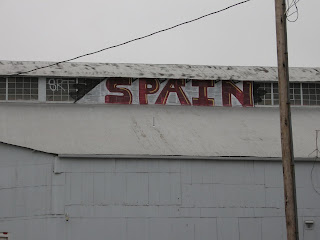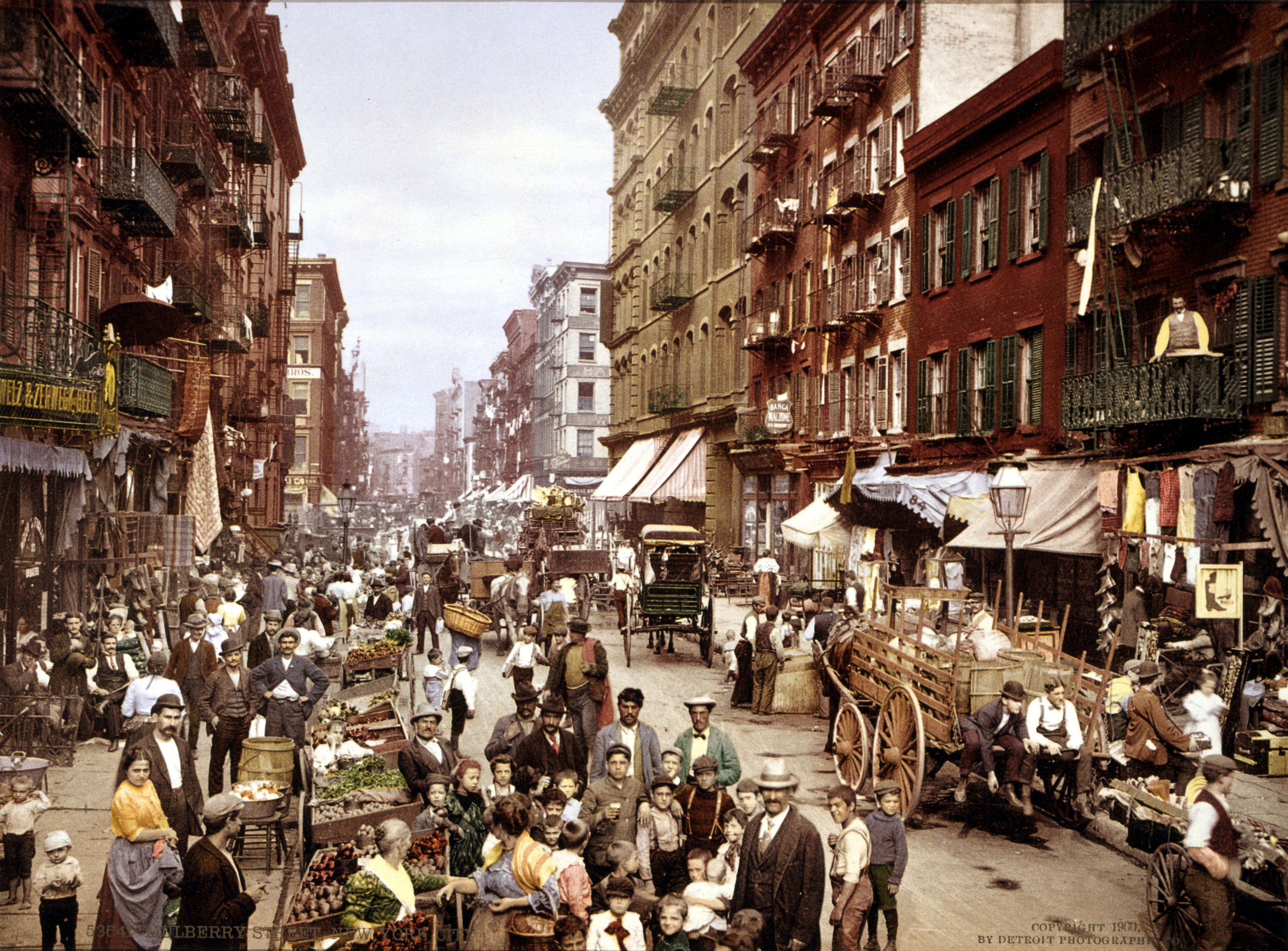
The Lower East Side, according to
the 1923 tour book, is the area east of the Bowery and south of 10th St. The author strangely refers to this area as simply, "the Ghetto". So the author described several ethnic neighborhoods in the book, so I did not understand why he described just one of them, the then primarily Eastern European Jewish one, as "the Ghetto". The term ghetto, after all, in modern use seems to refer to any neighborhood that is occupied primarily by any ethnic minority. Then I learned that prior to World War II the term
"ghetto" was used almost exclusively to refer to Jewish neighborhoods. In fact the first "ghetto" was the walled
Venetian Ghetto in Italy. Ghetto is the Italian word for "foundry". Lesson learned.
In the 1920s the neighborhood was described as, "everywhere, Yiddish signs, Yiddish newspapers, Yiddish beards and wigs". One of the neighborhood's main drags, Hester St. is described as being "alive with pushcarts where everything is sold on the sidewalks from pins to fur coats".
While there certainly are several neighborhood in Brooklyn where such a scene can be had, the Lower East Side is certainly not one of them. All of the signs are either in Chinese or Vietnamese now. Hester St. does not boast such a lively scene - the pushcarts seem to have been replaced by cell phone stores and the southern end of the street, west of the Bowery has been taken over by a massive, extremely ugly public school that look like it's right out of
A Clockwork Orange.
The author makes the several blocks bounded by the Bowery to the west, Allen St. to the east, Grand St. to the north, and Hester St. to the south, as the nerve center of the neighborhood. Allen St. (pictured below), which at that time had an elevated rail line running above it, is called, "a virtual tunnel of a street" and as the "home of little brass shops, and in its basement and dingy stores ... one can find charming Russian candlesticks, samovars, and
andirons (horizontal bars for fireplaces)". Today Allen St. feels almost suburban - the elevated tracks are gone, and the boulevard the tree-lined boulevard that has replaced seems like it would be more at home in Nassau County than in Manhattan.

The neighborhood is vastly disappointing, and not because it has changed hands from one ethnic group to another, but because it just seems so irrelevant now, like an outpost, a few secondary commercial streets to stop off for some fruit on one's way home from the subway to the many high-rises that tower along the East River. It is an outgrowth of the ever expanding Chinatown, with eastern Canal St as its verve center. The Bowery which clearly divided the Jewish enclave from its western neighbor, Little Italy is simply a large
Chinatown street. This section of the city seems so
balkanized in the 1923 description that it was difficult for me to feel as if I was in the same place. As I was walking from what had been fairly WASP-ish, to what was extremely Italian, and finally wholeheartedly Jewish in 1923, it seemed strange to be immersed in a remarkably homogeneous Asian-American neighborhood.

 For whatever reason, the scene just grabbed me. I thought of my September post on Bollywood Escapism. Would one consider this act of obviously planned graffiti an act of American Escapism?
For whatever reason, the scene just grabbed me. I thought of my September post on Bollywood Escapism. Would one consider this act of obviously planned graffiti an act of American Escapism?



